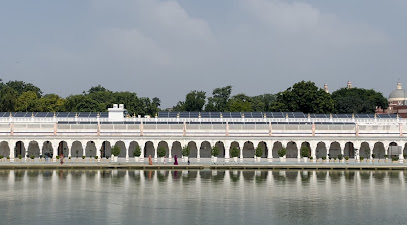Of Capitalistic Appetite and Bulimic Architecture
The human body is frequently referred to by architects; whether it is by its structure, function, or proportions, it remains a fountainhead of inspiration and reference. Nevertheless, if the body is sick, what will be of the house modelled after it? If the materials from which the building is constructed are malnourished, can it sustain life?
Eating disorder are a modern disease: self starvation can exist in a world where food is in abundance. Contemporary neoliberal and capitalist food systems focus on aesthetics of abundance, but not on quality. We are constantly afraid of obesity and encouraging self control. Binging becomes a solution, for both capitalism's hunger for consumption and control: one consumes large quantities irresponsibly and purges it at once, as if they had never eaten them. This is a cycle of pain a suffering, that seems to never end.
Modern building materials have been suffering too: traditions and vernacular ways of building are disappearing. They require too much: knowledge, care and understanding. We are modern, we do not need to know how to work with stone, timber or bamboo. We have a new material: concrete.
Reinforced concrete was, and perhaps is the "perfect material": relatively cheap, available, clean and efficient. Anywhere around the world, buildings rise, through reinforced columns and beams. These buildings are slowly growing to new heights; The columns stretch until they touch the sky, thinner than ever, reducing the building's contact with the ground, allowing it to float as if it were a light cloud. Under the ground, concrete permeates, takes hold and ensures its permanence. It cannot be escaped, these buildings will stand forever, ever strong, ever healthy.
The sand quarrying, "zizzif", for the production of concrete, starved the coastlines of Palestine and Israel of 10 million cubic meters in a matter of a few decades. In 1964 the quarrying was banned, however the use of concrete not only remained, but grew exponentially. The production of this material is wasteful a great contributer to pollution. Reinforced concrete cannot be recycled.
Concrete is sick. In a sense, concrete is bulimic material; it is made from mixing gravel, sand, cement, and water. The more water it is fed, the more water it absorbs, the more the concrete will vomit its contents out of itself. As the concrete made buildings grow older and accumulate more memories, they become less resilient, eventually collapsing in on themselves.
These buildings were thought to be eternal and everlasting. These preconceptions were quickly realised as these buildings started to fall apart, and slowly were designed to be obsolete.
The buildings themselves, born of concrete, are out of place, echoing the modern country of capital and splendor, where only pure geometric shapes dictate the architecture. Thus, these structures do not correspond with the environment or create an urban harmony. They grow alone, independent, undermining the landscape around them, secretly wishing for mass destruction and for an opportunity to consume their surroundings, in order to regurgitate it, as if it had always been a land ruled by concrete.
Concrete construction is nearly identical all around the world: the mixing ratios, the casting methods, the engineering of the columns and beams. The widespread, use of concrete erases traditional architecture, the vernacular methods and the accumulated knowledge about local construction.
The starving concrete remains hungry, never satiated. It is meant to lose more and more weight, to accumulate more and more floors, as if it were an unlimited resource, as if it would never fall apart. It is designed to erase local craft and rebuild societies in a neoliberal order.
So, should we cancel concrete, or heal it? Is concrete a sickness, or are we?

































